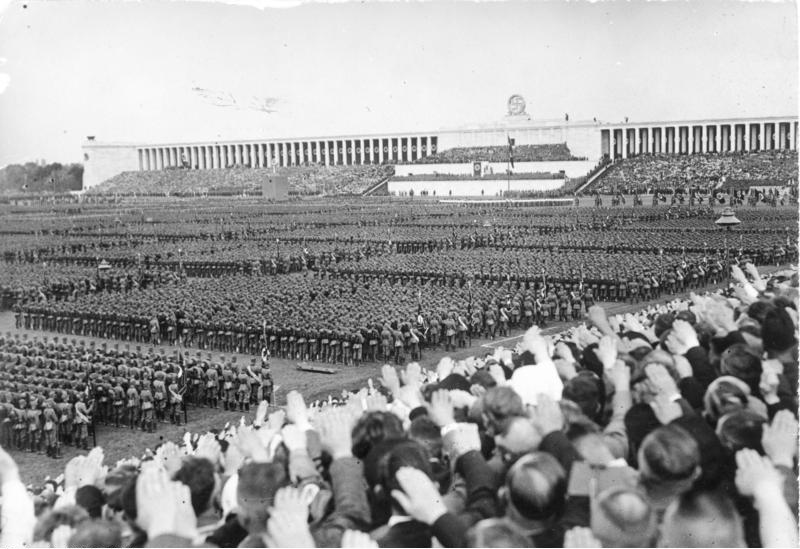75 Years Ago: The Nuremberg Trials Posted by Sten on Nov 23, 2020 in Culture, Language
Last Friday was the 75th anniversary of the beginning of the Nürnberger Prozesse (Nuremberg trials). It was a series of Strafprozesse (criminal trials) to bring Nazis to justice. The Prozesse are seen as the beginning of the Völkerstrafrecht (International Criminal Law) and were an important marker how justice can be served to people that have such severe crimes to their names.
The Chefankläger (chief prosecutor) in case 9 at Nuremberg against the leaders of the Einsatzgruppen (action groups) that were responsible for murdering the population of entire towns in Eastern Europe, Benjamin Ferenc, opened the ninth Prozess with the following words:
“The accused on the dock were the cruel executioners whose terror wrote the blackest page of human history. Death was their tool and life their toy. If these men are immune, the law has lost its meaning, and man must live in fear.”
Ferencz had evidence that was found in Berlin at the end of the war. Top secret documents that tallied the number of people killed and documented the Einsätze (actions) by the Einsatzgruppen. With this evidence, all 22 of the accused were found guilty.
Ferencz was only 27 years old at the time, and he is still alive today. He would go on to play a big role in establishing and defending the International Criminal Court (ICC), headquartered in The Hague in the Netherlands. This court only began operating in 2002, so it was a long road from World War II to get to that point. Last Friday, he was interviewed by the Tagesschau.
Ferencz was on 60 Minutes as well a few years ago, and is as driven and inspirational as ever.
The Nürnberger Prozesse had many firsts. It was the first time that four countries came together to serve justice in the same Gerichthof (court). It was the first time that politicians were made personally responsible for völkerrechtliche Verbrechen (international crimes). There were 13 Prozesse in total against more than 200 Nazis. The first main trial was held by the four allies together, while the other 12 were done by the US alone.
In the end, the main trial ended with 12 Todesurteile (death sentences), seven Freiheitsstrafen (“freedom sentences”, prison sentences) and three Freisprüche (acquittals). In the remaining 12 Prozesse, 24 more Todesurteile fell.
Why Nuremberg?
Nuremberg was chosen as a location for the Prozesse since it was the city where Hitler’s NSDAP regularly held its Parteitage (party conventions) since 1927. Hitler would refer to it as his Lieblingsstadt (favorite city) in Franken, calling it the “Stadt der Parteitage” (City of Party Rallies).
Holding the Prozesse in this city is a way to show that the wind was blowing in a different, a better direction now.

Build vocabulary, practice pronunciation, and more with Transparent Language Online. Available anytime, anywhere, on any device.





Comments:
Allan Mahnke:
Rev Henry Gerecke, a mentor to my father, and Lutheran chaplain to the defendants at Nuremberg, was a regular part of my childhood during the late 40s-early 50s. There are several YouTube links to him. They are worth hearing to get a firsthand account.
Sten:
@Allan Mahnke Interesting, thank you for pointing to that!
Nachiketa:
Thank you for giving us access to the rare speeches and facts of history.
Regards,
Nachiketa